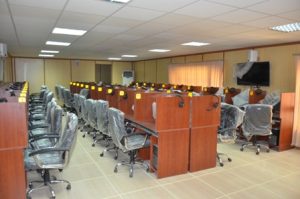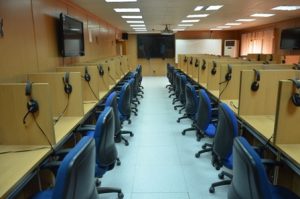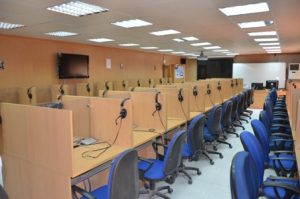Language Labs
An Overview
Labs of the College of Languages were established in the same year as the college itself, in the current location in 1987. At that time, they were made of four main audio-visual halls, in addition to four other halls distributed among the academic departments. In 2009, which is named as the year of comprehensive change in the College of Languages, computers were introduced for the first time as scientific tools for delivering correct pronunciation to students. This was especially important after teaching Computer Science alongside Reading, Pronunciation, Comprehension, and Conversation. The greatest achievement was obtaining a modern phonetic lab from South Korea, making Iraq one of the first countries in the world to use it. It went into operation in 2010, while it was made to operate in the European Union in Germany in 2011. The laboratory makes an electronic university professor containing academic curricula for only three languages: English, French, and Spanish. It includes everything related to language pronunciation, as well as the culture and literature of the mentioned languages. The College is currently working on acquiring a second lab from the same source, which would include 11 languages which are the languages taught at the College of Languages. The lab supposedly would represent a significant leap in the academic and technological development of Iraq as a whole.



